CONTENTS
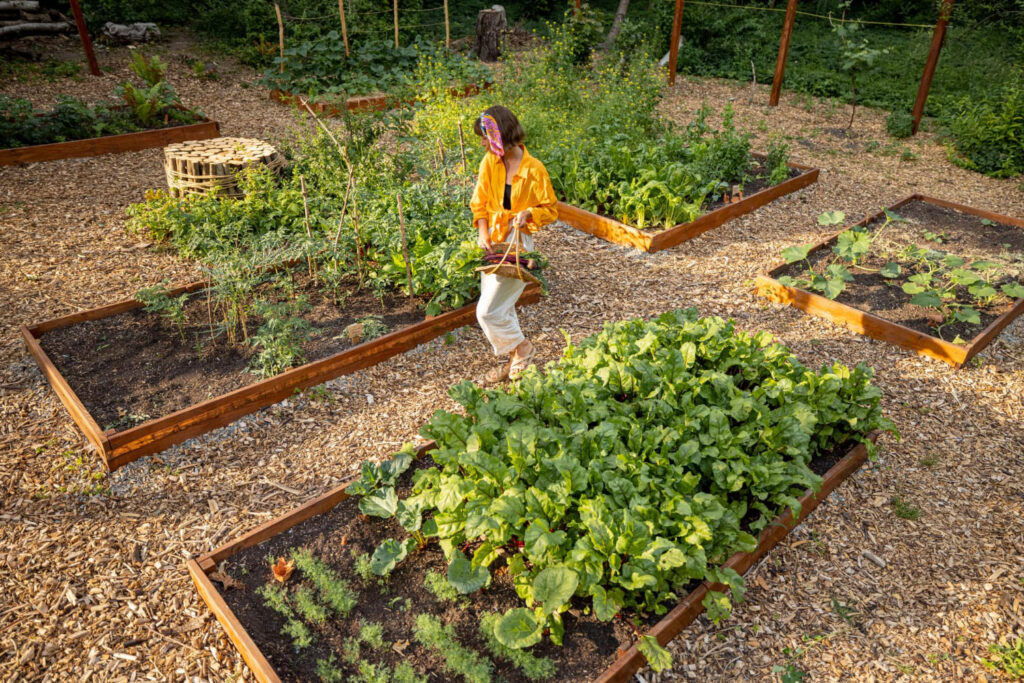
Getting Started: The Ultimate Guide to Raised Bed Gardening
If you’ve ever dreamt of nurturing your own garden but are deterred by the thought of extensive yard work or limited space, raised bed gardening could be your golden ticket to cultivating your green thumb.
Whether you’re an urban dweller with a tiny balcony or a suburbanite with a spacious backyard, this method can transform your gardening experience.
So, if you’ve been searching for a beginner-friendly, low-maintenance, and space-efficient approach to raised bed gardening, this guide is for you. Let’s get started!
Benefits of Raised Garden Beds
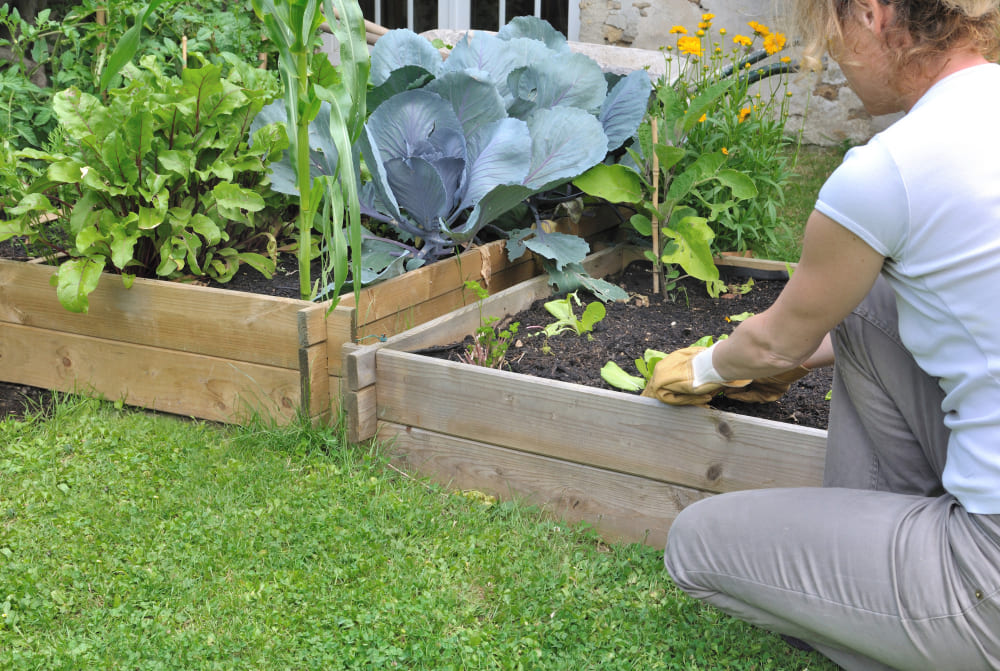
Raised garden beds are a boon for gardeners, offering numerous advantages.
They’re easier to maintain, especially for those with mobility issues, and provide superior drainage—a great solution for areas with poor water runoff.
Moreover, they’re perfect for small spaces, allowing intensive cultivation. Plus, you have total control over soil conditions, promoting healthier plants.
Lastly, they add an aesthetic appeal to your yard, making your garden look organized and tidy. So, consider raised beds for a more efficient and enjoyable gardening experience.
The Right Location for Raised Garden Beds
Planning to create a raised garden bed? You must look for the best location for the plants to thrive beautifully. Consider these factors to find the right location.
Sunlight
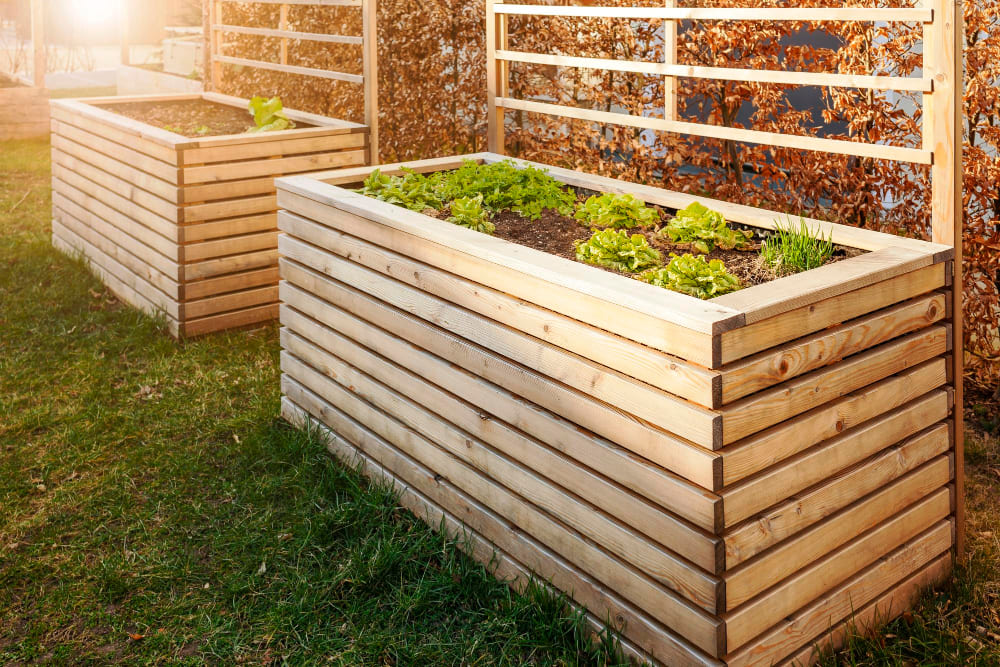
Most vegetables and flowers require direct sunlight daily for at least 6-8 hours to ensure optimal growth. Therefore, observing your potential garden site throughout the day is important to ensure it receives adequate sunlight. Placing your bed in a sun-drenched spot can lead to a more bountiful harvest and healthier plants.
Convenience
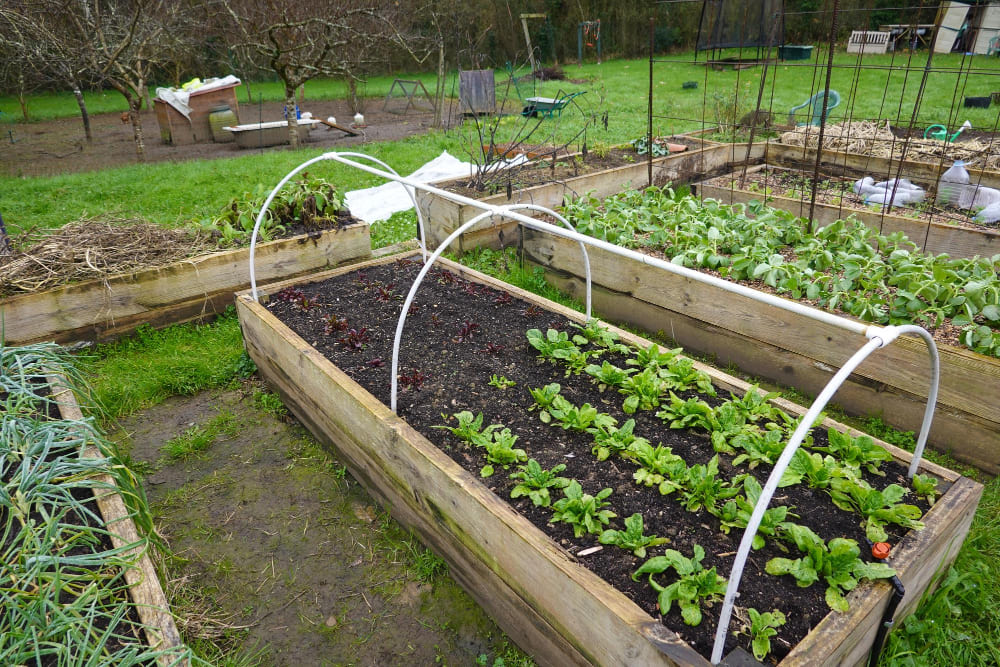
The location should be easily accessible for regular maintenance tasks like watering, weeding, and harvesting. Additionally, consider the view from your home; it’s nice to have your garden within sight so you can enjoy your plants’ beauty and quickly spot any potential issues.
Water
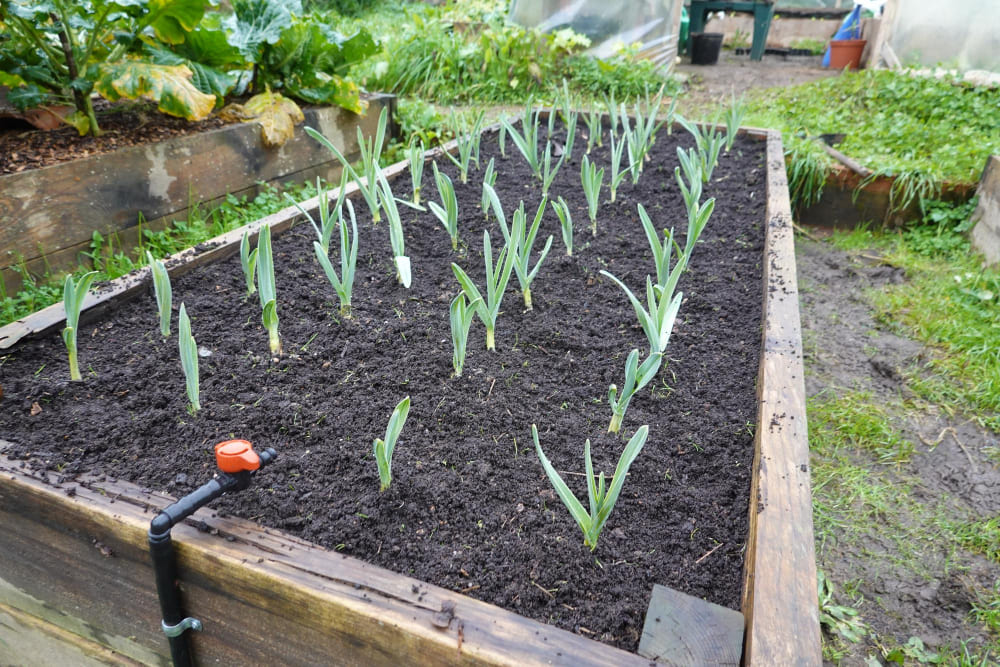
Plants need consistent and easy-to-manage watering, so placing your beds near a water source can make this task simpler and more efficient.
Additionally, raised beds provide excellent drainage, which is great for plant health but means they may dry out quicker, requiring more frequent watering. Thus, an easily accessible water source becomes even more important.
The Best Raised Garden Bed Materials
Want to make a strong, durable raised garden bed for your plants? Consider using these raised bed materials.
Wood Raised Beds
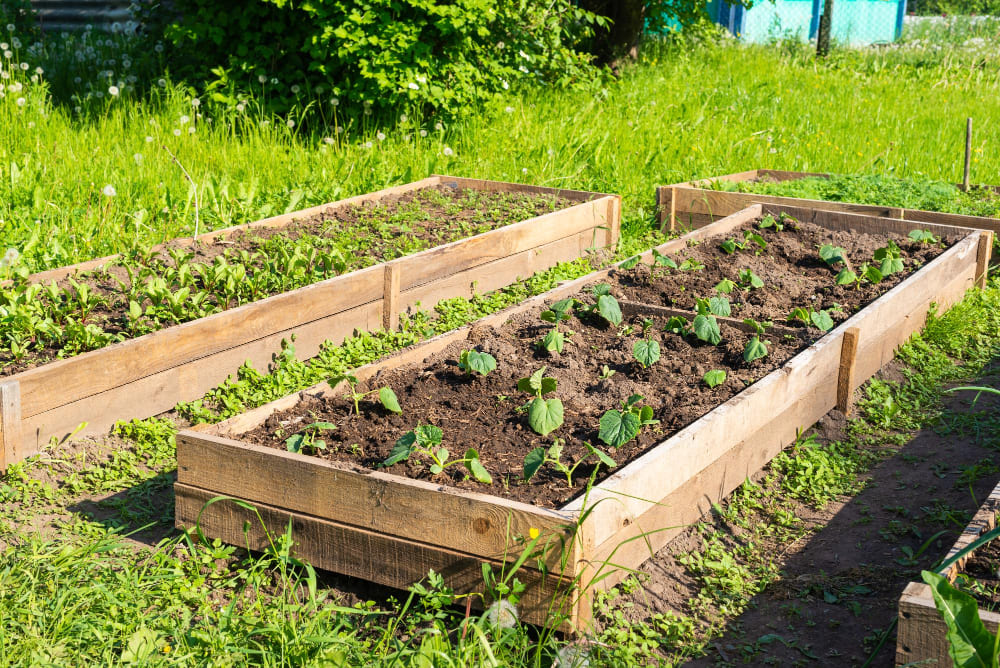
Wood is often considered the best material for raised garden beds due to its affordability, accessibility, and ease of use. Plus, wooden raised beds blend naturally into the landscape, providing a rustic aesthetic appeal.
Cedar and redwood are particularly popular wooden beds because they naturally resist rot and pests. However, even these will eventually break down, adding organic matter to the soil. In addition, they may not last as long as plastic or metal beds.
Steel Raised Beds
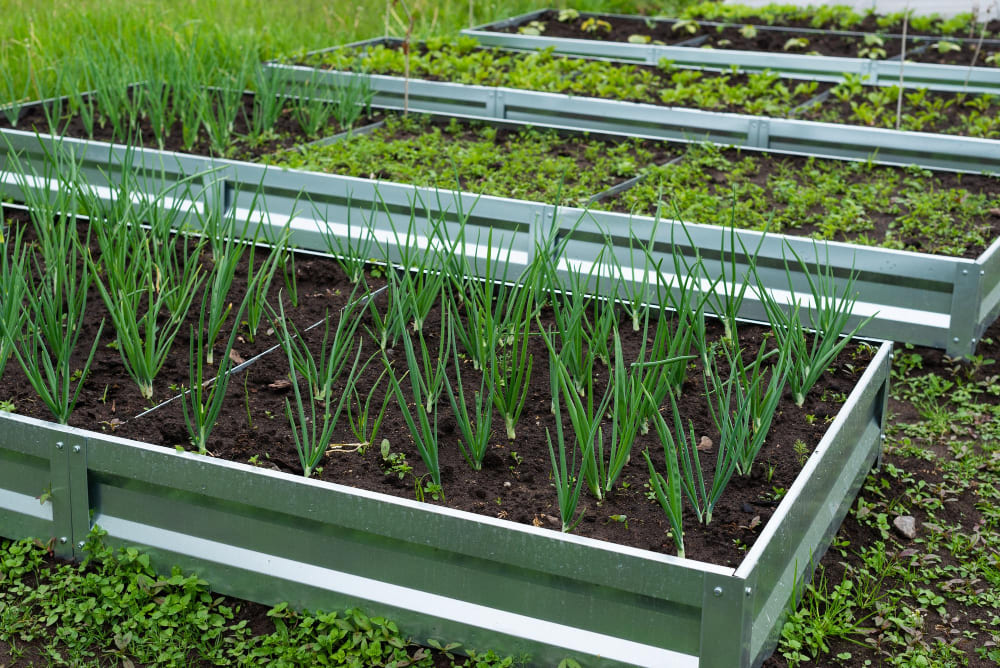
Steel is a highly durable material, making it an excellent choice for raised garden beds despite its initial expensive cost. Unlike wood, steel won’t rot or deteriorate over time, meaning it can potentially provide many years of use.
Galvanized steel, in particular, offers added resistance against rust and corrosion. Steel beds also offer a modern, sleek aesthetic that can complement contemporary garden designs.
Additionally, steel conducts heat, warming the garden soil for faster plant growth in spring. However, you must be mindful during the hot summer months as the soil may overheat.
Raised Bed Gardening Mistakes
Before building your own raised bed garden, avoid these common mistakes.
Using A Wrong-Sized Bed
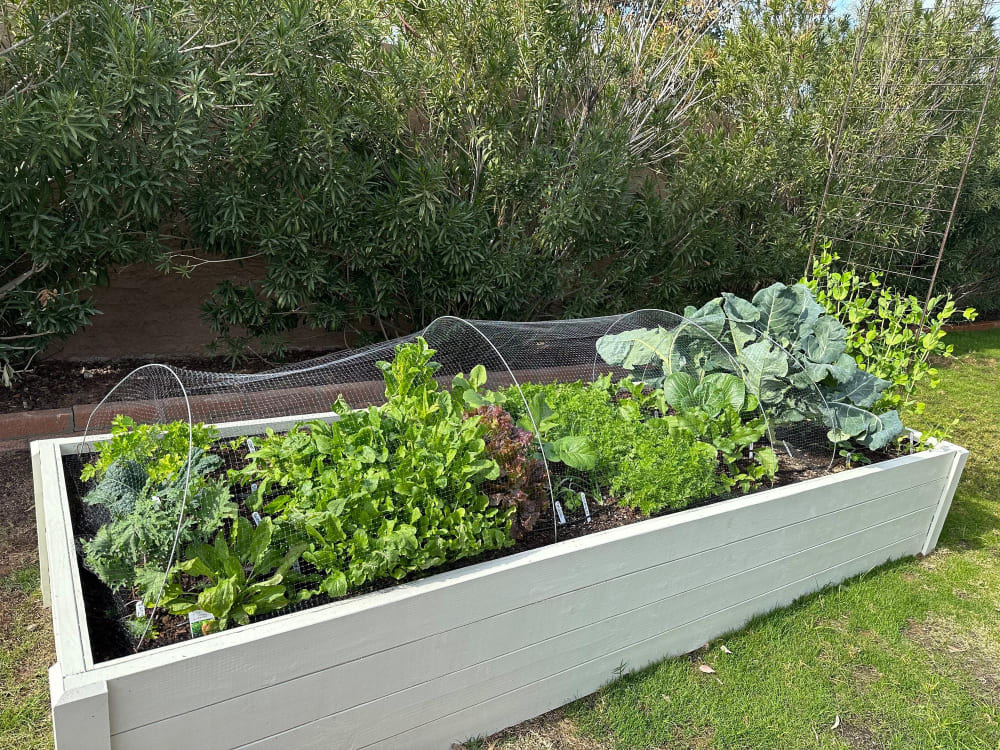
Choosing the wrong-sized raised bed can hinder plant growth and make gardening tasks difficult. Too large, and you can’t reach the center; too small, and plants may not have enough room to grow.
The ideal size is usually 4 feet wide and 12 inches deep to accommodate a wide variety of plants so that you can reach the center from either side comfortably.
Choosing The Wrong Location For Your Bed
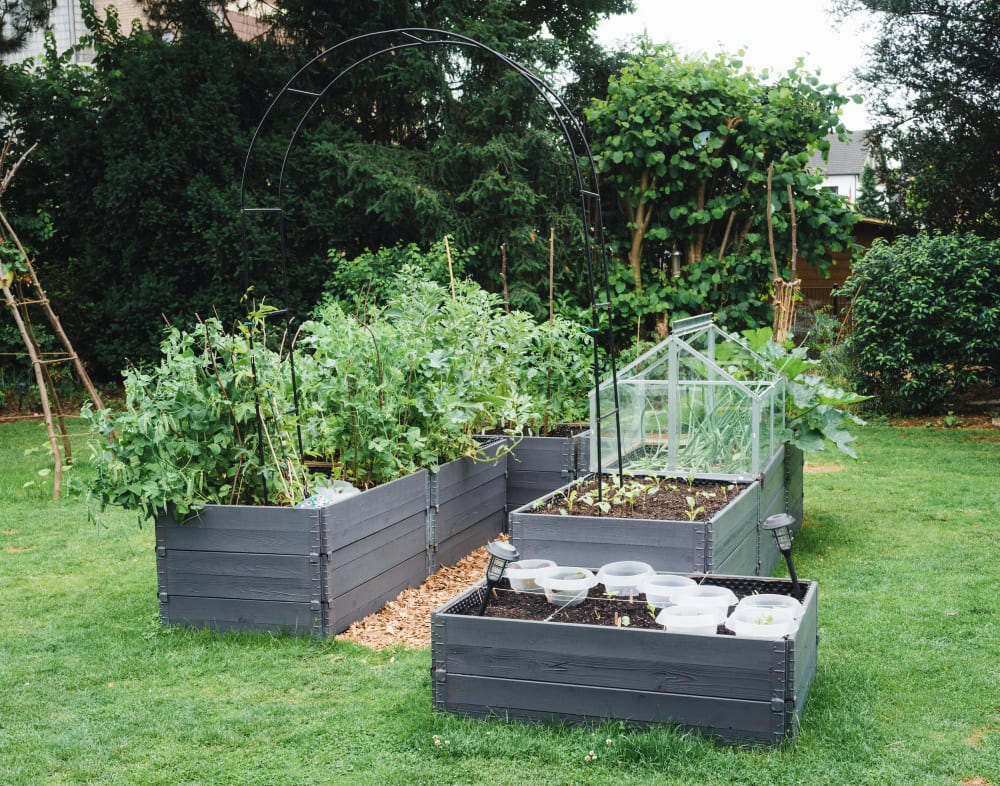
To ensure optimal plant health and growth, choose the right location. Factors to consider include sunlight, water access, and wind exposure.
Most vegetables and fruits need at least 6-8 hours of sunlight daily, so a shaded location may hinder their development. A spot too far from a water source can make watering inconvenient, while an overly exposed area can leave plants vulnerable to wind damage.
Using Weed Killer
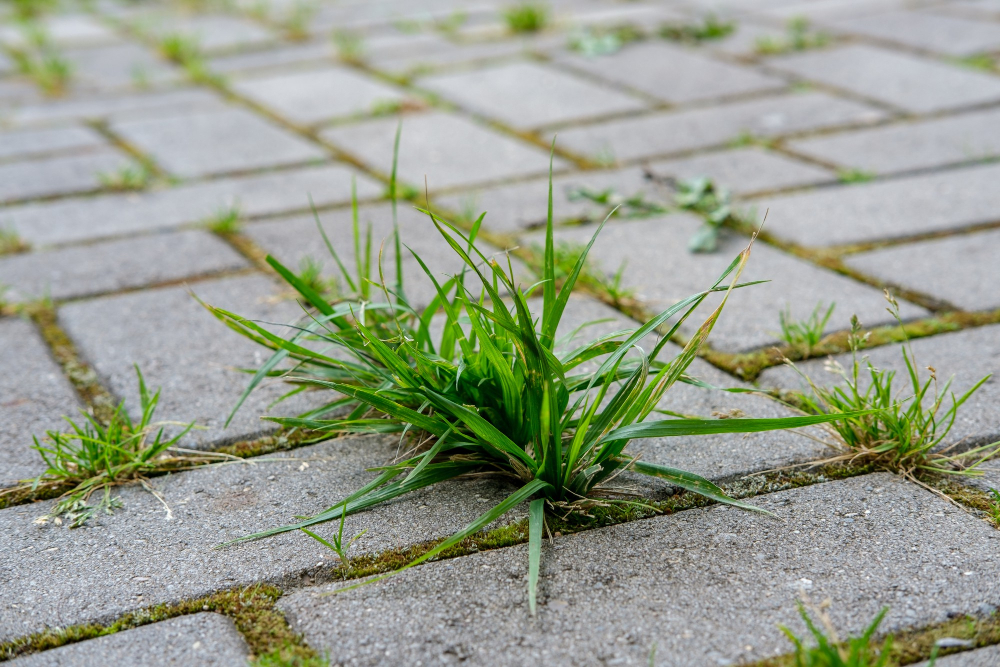
Weed killer contains chemicals that can harm beneficial soil organisms, disrupt the natural ecosystem, and potentially contaminate your crops. Instead of resorting to harsh weed killers, consider manual weeding, mulching, or planting ground cover to suppress weed growth. This ensures a healthier, more sustainable garden environment.
The Best Plants for Raised Bed Gardening
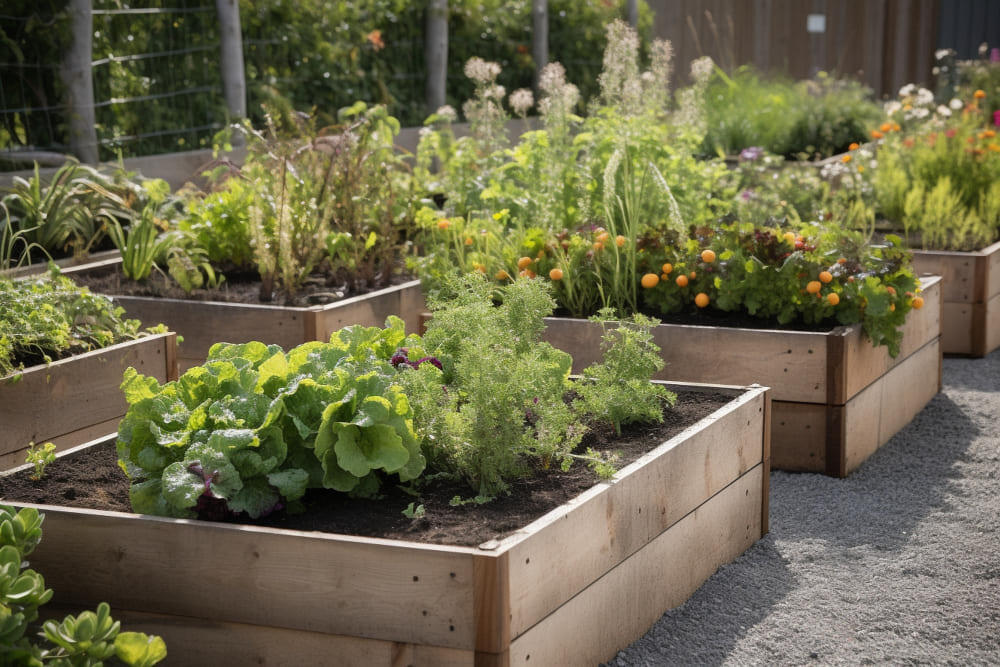
Raised bed gardening is ideal for various plants, such as edible plants and root crops. Top vegetable garden plants for raised beds include carrots, radishes, parsnips, tomatoes, beets, and small varieties like cherry tomatoes.
Herbs like basil, lavender, marjoram, oregano, and rosemary thrive in raised beds, as do leafy greens. Moisture-loving plants like cardinal flowers, sedges, and monkshood are suitable, while Russian sage and prairie plants prefer dry spots.
On top of that, cucumbers, potatoes, cassava, lettuce, onions, garlic, leeks, and peas are also some of the best plants.
Frequently Asked Questions
How deep should raised vegetable beds be?
Raised vegetable beds should be 6-12 inches deep for shallow-rooted plants and 12-18 inches deep for medium to deep-rooted plants. A general minimum is eight inches, but with good soil below, plants can have up to 18-20 inches of soil.
What does a raised garden bed need?
A raised garden bed requires a durable structure, quality compost-enriched soil, suitable plants, consistent watering, and daily sunlight. Mulching, regular upkeep, and protection from pests and weather are also essential.
What is the difference between a raised bed and a planter?
A raised bed is a large, bottomless garden structure on the ground, offering soil and drainage control. Conversely, a planter is smaller with a bottom, suitable for container gardening even without soil, like on balconies, but may need more watering.
Conclusion
In conclusion, raised bed gardening provides better soil quality and drainage control and allows you to cultivate various plants, even in limited spaces.
Remember, the key to the success of raised bed gardens lies in choosing a sturdy structure, enriching your soil with compost, selecting suitable plants for your climate, providing consistent watering, and ensuring adequate sunlight.
With these tips from our ultimate guide to raised bed gardening, you can transform your house garden into a bountiful oasis. Happy gardening!

